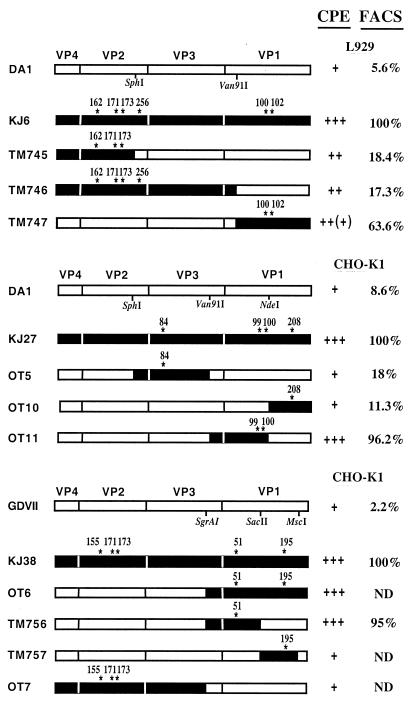FIG. 4.
Role of the KJ6, KJ27, and KJ38 mutations in adaptation to L929 and CHO-K1 cells. Recombinant viruses were constructed to identify the mutations responsible for the adaptation of DA1 and GDVII viruses to CHO-K1 cells (KJ27 and KJ38) and for the adaptation of DA1 to L929 cells (KJ6). The capsid-encoding region of the recombinants is shown. Restriction sites used for cloning are indicated. Black frames identify regions cloned from the virus adapted to CHO-K1 and L929 cells. White frames identify regions from the parental DA1 and GDVII viruses. The right lanes summarize the data from at least three independent infection experiments done to compare the infectivity of recombinant viruses with that of their parental strains. Infectivity was monitored both by following the cytopathic effect (CPE) and by measuring the number of infected cells after immunostaining and flow cytometry (FACS). Relative CPEs were graded + (low) to +++ (high). ++(+) indicates a slightly weaker effect than +++. Data from FACS analysis (derived from Table 2) are percentages of infected cells normalized to the corresponding adapted virus (KJ6, KJ27, and KJ38), which was taken as 100%. ND, not done. Note that for both cytopathic effect and FACS analyses, comparisons apply independently for the three groups of recombinants (derived from KJ27, from KJ38, and from KJ6).

